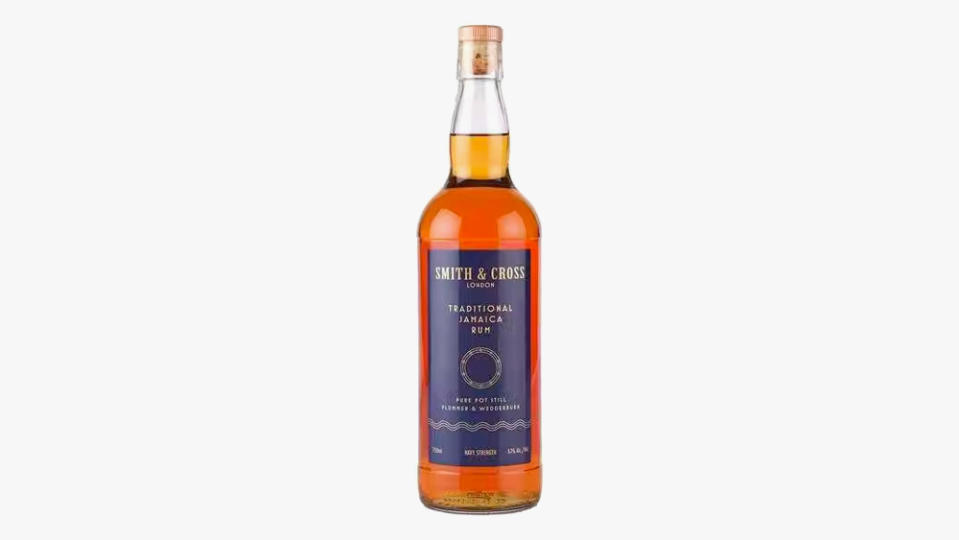How to Make the Captain’s Blood, a Daiquiri With a Deliciously Dark Edge

The Captain’s Blood is a tribute to the virtues of strategic discomfort.
It’s choosing to do a Gladiator Mud race instead of a breezy pavement jog, or why you’ve spent a good deal of time and effort making your home comfortable, but you still sometimes go to the middle of nowhere to pitch a tent and sleep on the ground. It’s a cocktail that recognizes that while we might think we want everything to be easy and agreeable, too much of that for too long will make you start running into walls just to feel something.
More from Robb Report
How to Make a Trifecta, the Whisky Cocktail With Hints of Fall Peach and Apple
Tiger Woods and Justin Timberlake Just Opened a Sports Bar and Members Club Together in N.Y.C.
How to Make an Adonis, the Low-Alcohol Cocktail That's Complex, Delicate, and Elegant
The “easy and agreeable” there is the classic Daiquiri, which is the framework on which the Captain’s Blood sits. A Daiquiri is light rum, lime juice, and sugar, and is among the simplest and most elementally delicious things a person can drink. The Captain’s Blood enters the canon some 50 years later, in Crosby Gaige’s The Standard Cocktail Guide in 1944. The name is unfortunate, admittedly, in that it sounds disgusting. I don’t have much to say about that except for that Gaige was merely an enthusiastic amateur fond of renaming drinks if he found their previous names to be insufficiently dazzling, and his sensibilities on such matters were a little suspect (as demonstrated by the My Heart Stood Still and the Poop Deck, two real cocktails that appear in the same book). Some have speculated that Captain’s Blood is a reference to the 1935 Errol Flynn pirate film Captain Blood, which would make sense—the timing works, and both have Jamaican themes—but we can only speculate.
In any event, the Captain’s Blood as originally represented in Gaige’s book introduces friction to the Daiquiri mold in three ways—two of which we will retain, and one so unpleasant that we can’t recommend it to anyone.
The first and most important is the choice of rum. While a standard Daiquiri uses a light, easy Spanish-style white rum, the Captain’s Blood calls specifically for Jamaican rum, “both good,” Gaige writes, “but of entirely different characteristics.” These days, many different kinds of rum are exported from Jamaica, but at the time, Gaige would’ve meant the style of rum that is so flavorful that it necessitates a new word: hogo. Hogo is the term for the specific funkyness of Jamaican rum that tastes like earth and burnt molasses and bananas and nutmeg but doesn’t really taste like any of those things because it’s just hogo. Jamaican rum has a distinct fingerprint and it’s not subtle, and calling for it gives the cocktail a firm shove into darker and more esoteric territory.
The second way this strays from a Daiquiri is in its heavy dose of Angostura Bitters, which adds tons of texture and the flavors of baking spice. The bitters combine with the hogo to create an entirely new drink, one that’s deeper and richer and honestly weirder, a drink that’s still sunshine-caliber refreshing but whose soul spends half the year in the underworld. It’s a Daiquiri with an edge.
The final twist in Gaige’s original recipe—the one we can’t and won’t recommend—is that he keeps the full measure of lime juice but completely omits any sweetener at all. This makes a cocktail that’s punishingly tart, entirely unpleasant, and stretches the limits of strategic discomfort. The goal is self-improvement, not self-flagellation.
Captain’s Blood
2 oz. Jamaican rum
1 oz. lime juice
0.75 oz. simple syrup
2-3 solid dashes of Angostura bitters
Add all ingredients to a shaker, and shake on ice for 8-10 seconds. Strain up into a coupe, martini, or cocktail glass, and garnish with a lime wheel, or perhaps nothing at all.
NOTES ON INGREDIENTS

Ratios: There’s not a ton out there about the Captain’s Blood, but the recipes that do exist mostly try to conserve Gaige’s intentions by using barely any sweetness or reducing the lime as well, making a cocktail that’s essentially like a dark Ti’ Punch. Part of the being a professional bartender for 15-plus years is the confidence to simply recognize a bad idea when I see one, so I have fixed the ratios above to actually taste good.
Jamaican Rum: The last 10 years has seen an explosion of available brands. What we’re looking for here is not just an aged rum from Jamaica but one with the hogo we desire—Appleton Estates would be delicious but doesn’t have the funk. For brands, I think Smith & Cross worked best, regardless of its high proof. Also great are Dr. Bird, Hamilton’s Jamaican Pot Still, and anything from Worthy Park or Hampden Estates.
Simple Syrup: Grab a half-cup of white sugar, and put it in a small pot. Add a half cup of warm or hot water. Stir for 30 seconds. You have just created simple syrup. Put it in the fridge and it’ll last a month.
Other Ingredients & Ratios: Some recipes call for falernum for seemingly no reason at all, and I haven’t been able to deduce why. Still, I’d call for it if I thought it made the drink better, but I don’t. It’s a lateral move at best—worth trying out if you have a bottle, I suppose, but I honestly think it’s cleaner, and hits with more precision with just regular old simple syrup.
Best of Robb Report
Why a Heritage Turkey Is the Best Thanksgiving Bird—and How to Get One
The 10 Best Wines to Pair With Steak, From Cabernet to Malbec
Sign up for Robb Report's Newsletter. For the latest news, follow us on Facebook, Twitter, and Instagram.

